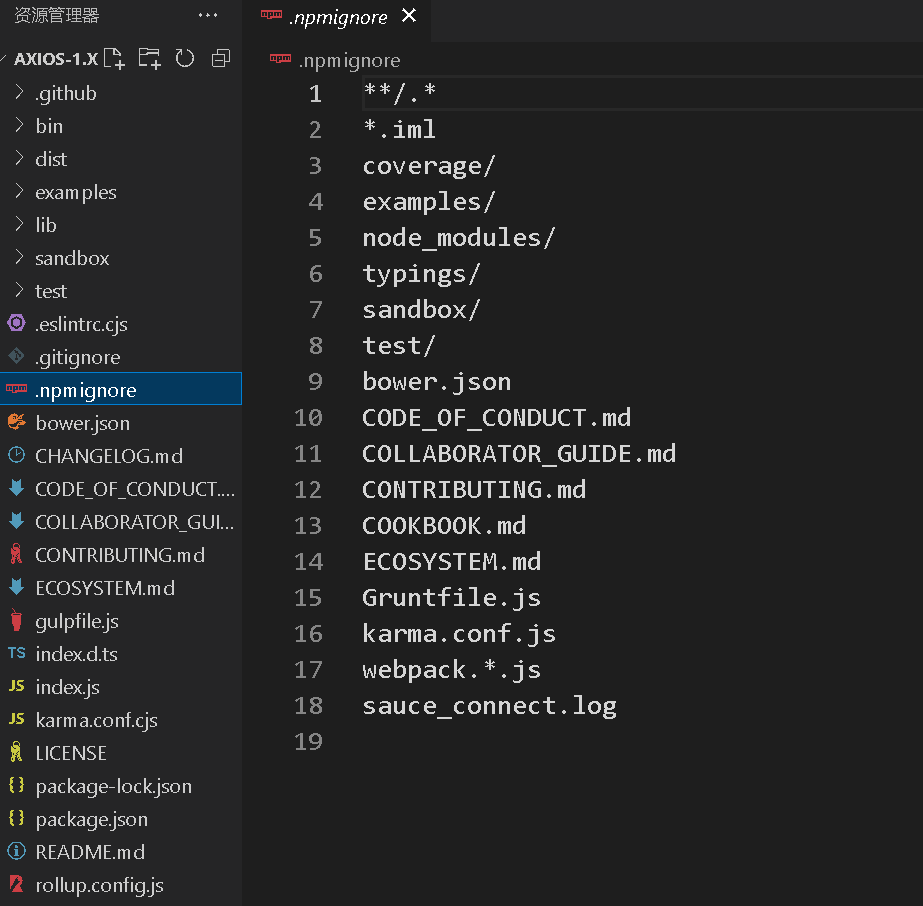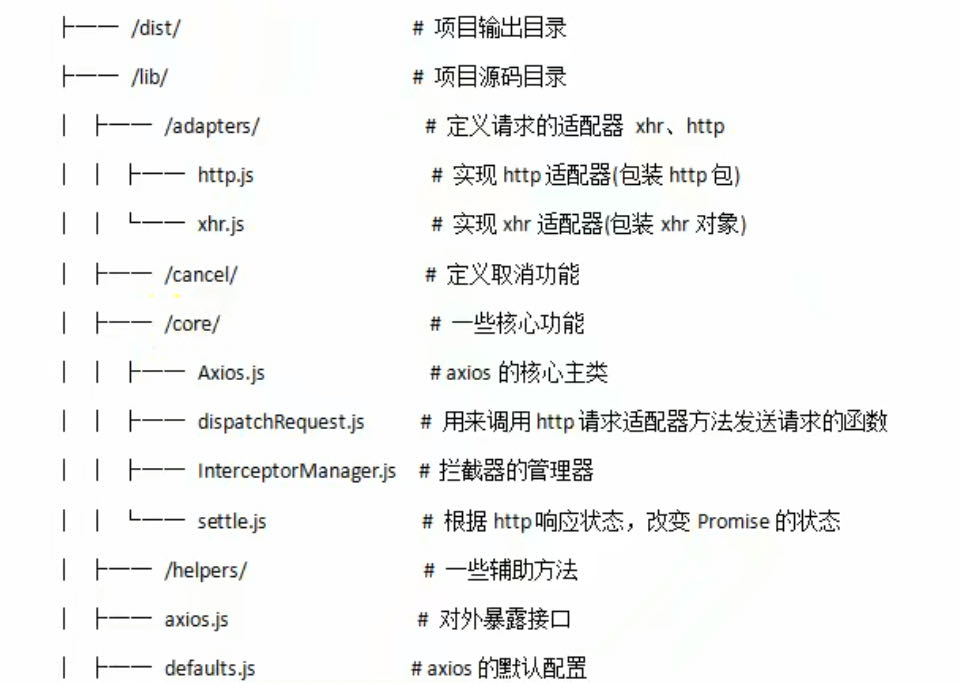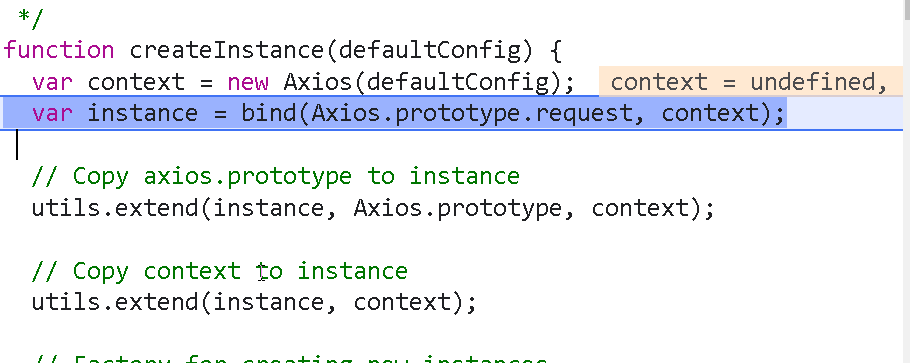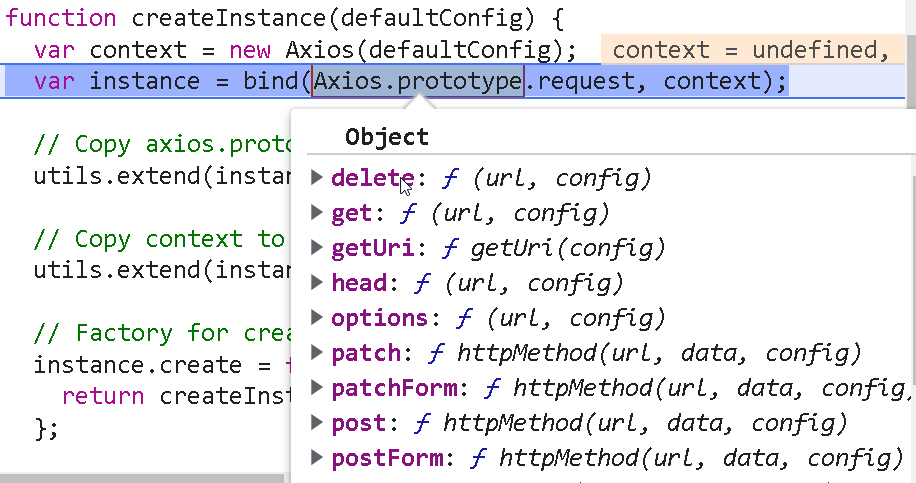1
2
3
4
5
6
7
8
9
10
11
12
13
14
15
16
17
18
19
20
21
22
23
24
25
26
27
28
29
30
31
32
33
34
35
36
37
38
39
40
41
42
43
44
45
46
47
48
49
50
51
52
53
54
55
56
57
58
59
60
61
62
63
64
65
66
67
68
69
70
71
72
73
74
75
76
77
78
79
80
81
82
83
84
85
86
87
88
89
90
91
92
93
94
95
96
97
98
99
100
101
102
103
104
105
106
107
108
109
110
111
112
113
114
115
116
117
118
119
120
121
122
123
124
125
126
127
128
129
130
131
132
133
134
135
136
137
138
139
140
141
142
143
144
145
146
147
148
149
150
151
152
153
154
155
156
157
158
159
160
161
162
163
164
165
166
167
168
169
170
171
172
173
174
175
176
177
178
179
180
181
182
183
184
185
186
187
188
189
190
191
192
193
| 'use strict';
import utils from './../utils.js';
import buildURL from '../helpers/buildURL.js';
import InterceptorManager from './InterceptorManager.js';
import dispatchRequest from './dispatchRequest.js';
import mergeConfig from './mergeConfig.js';
import buildFullPath from './buildFullPath.js';
import validator from '../helpers/validator.js';
import AxiosHeaders from './AxiosHeaders.js';
const validators = validator.validators;
开始对axios进行构造
class Axios {
constructor(instanceConfig) {
this.defaults = instanceConfig;
this.interceptors = {
request: new InterceptorManager(),
response: new InterceptorManager()
};
}
request(configOrUrl, config) {
if (typeof configOrUrl === 'string') {
config = config || {};
config.url = configOrUrl;
} else {
config = configOrUrl || {};
}
config = mergeConfig(this.defaults, config);
const transitional = config.transitional;
if (transitional !== undefined) {
validator.assertOptions(transitional, {
silentJSONParsing: validators.transitional(validators.boolean),
forcedJSONParsing: validators.transitional(validators.boolean),
clarifyTimeoutError: validators.transitional(validators.boolean)
}, false);
}
config.method = (config.method || this.defaults.method || 'get').toLowerCase();
const defaultHeaders = config.headers && utils.merge(
config.headers.common,
config.headers[config.method]
);
defaultHeaders && utils.forEach(
['delete', 'get', 'head', 'post', 'put', 'patch', 'common'],
function cleanHeaderConfig(method) {
delete config.headers[method];
}
);
config.headers = new AxiosHeaders(config.headers, defaultHeaders);
const requestInterceptorChain = [];
let synchronousRequestInterceptors = true;
this.interceptors.request.forEach(function unshiftRequestInterceptors(interceptor) {
if (typeof interceptor.runWhen === 'function' && interceptor.runWhen(config) === false) {
return;
}
synchronousRequestInterceptors = synchronousRequestInterceptors && interceptor.synchronous;
requestInterceptorChain.unshift(interceptor.fulfilled, interceptor.rejected);
});
const responseInterceptorChain = [];
this.interceptors.response.forEach(function pushResponseInterceptors(interceptor) {
responseInterceptorChain.push(interceptor.fulfilled, interceptor.rejected);
});
let promise;
let i = 0;
let len;
if (!synchronousRequestInterceptors) {
const chain = [dispatchRequest.bind(this), undefined];
chain.unshift.apply(chain, requestInterceptorChain);
chain.push.apply(chain, responseInterceptorChain);
len = chain.length;
promise = Promise.resolve(config);
while (i < len) {
promise = promise.then(chain[i++], chain[i++]);
}
return promise;
}
len = requestInterceptorChain.length;
let newConfig = config;
i = 0;
while (i < len) {
const onFulfilled = requestInterceptorChain[i++];
const onRejected = requestInterceptorChain[i++];
try {
newConfig = onFulfilled(newConfig);
} catch (error) {
onRejected.call(this, error);
break;
}
}
try {
promise = dispatchRequest.call(this, newConfig);
} catch (error) {
return Promise.reject(error);
}
i = 0;
len = responseInterceptorChain.length;
while (i < len) {
promise = promise.then(responseInterceptorChain[i++], responseInterceptorChain[i++]);
}
return promise;
}
往axios原型上添加getUri方法
getUri(config) {
config = mergeConfig(this.defaults, config);
const fullPath = buildFullPath(config.baseURL, config.url);
return buildURL(fullPath, config.params, config.paramsSerializer);
}
}
utils.forEach是专门用来遍历数组的
utils.forEach(['delete', 'get', 'head', 'options'], function forEachMethodNoData(method) {
往axios原型上面加方法,分别是delete,get, head,options
Axios.prototype[method] = function(url, config) {
return this.request(mergeConfig(config || {}, {
method,
url,
data: (config || {}).data
}));
};
});
我们这里的post, put ,patch也是如此
utils.forEach(['post', 'put', 'patch'], function forEachMethodWithData(method) {
function generateHTTPMethod(isForm) {
return function httpMethod(url, data, config) {
return this.request(mergeConfig(config || {}, {
method,
headers: isForm ? {
'Content-Type': 'multipart/form-data'
} : {},
url,
data
}));
};
}
Axios.prototype[method] = generateHTTPMethod();
Axios.prototype[method + 'Form'] = generateHTTPMethod(true);
});
运行完该文件后, axios原型上面就多了很多方法,之后我们axios的实例对象就可以调用这些方法,接着就是导出这个原型对象
export default Axios;
|




